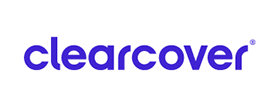An interesting real estate trend has cropped up in recent years: while demand for rents has stayed strong, consumers have also turned their attention to single-family homes.
Renting is like having a home without the commitment. Or living in a home but retaining the agility to up and move quickly.
As prices of single-family homes have risen and lending remains strict, down payments and loans have become harder to come by. Add in Millennials, a generation of buyers with sometimes staggering student loan debt but growing families, or Baby Boomers, who don’t want the headaches involved with homeownership.
Flexibility and mobility have become the driving force.
Now, builders and investors are building single-family homes with the intent to rent instead of sell. In one of the bigger moves nationwide, Toll Brothers announced earlier this year that it had committed to invest $60 million in a $400 million venture that would build homes for rent in seven major U.S. cities.
An article in CNBC this summer called the built-to-rent (or B2R), the fastest-growing trend in real estate. Last year, about 43,000 single-family homes were built for rent, it said. And the built-for-rent share of housing starts is also rising, to nearly double its recent historical average from 1992-2012.
In Pradera, a gated community of three- and four-bedroom homes in San Antonio, Texas, the rents are $1,800 to $2,300 a month and the community includes a pool, fitness center, community kitchen and party space, plus dog park and dog-washing station. Interestingly, the average annual household income in Pradera is more than $100,000 — meaning many of the tenants can afford to buy but have chosen not to.
Category: Business
Wage and hourly lawsuits: Easy to file, devastating to lose
As a small business owner, are you 100 percent sure you’re paying employees correctly? Are you tracking their hours accurately? Are those you’ve classified as exempt really doing the work that qualifies them for it?
If not, take a sharp eye to your payment system very soon.
In the last few years, numerous small businesses have been hit by lawsuits citing them for underpaying or misclassifying employees, failure to pay required wages, and sufficient overtime.
And the smaller the company, the higher the risk.
Also, the threat to unprepared employers will increase early next year when a rule proposed by the U.S. Department of Labor takes effect. In its current form, the law would make an estimated one million more workers eligible for overtime pay.
Any vulnerabilities in a business’ payment system are red meat for plaintiff lawyers who appear to be getting more successful in their pursuits. They won 79 percent of 273 wage-and-hour certification decisions in 2018, an increase of six percent over the previous year.
Companies also absorbed a decrease of 11 percent in their odds of defeating cases with successful decertification motions.
Even more foreboding is the lone discontented employee who could hire a plaintiff attorney who then could parlay the case into a class-action lawsuit that would be very expensive for any company to fight.
According to the Society for Human Resource Management, wage and hour disputes are cash cows for plaintiff attorneys: Their fees are easier to obtain than in other forms of commercial litigation.
To protect your business–and ultimately you and your family–make sure that all your workers (contractors, staff, overtime-exempt, and non-exempt) are classified correctly, and that they are being paid according to federal and state laws.
Also, seriously consider proposing an arbitration agreement with your employees that includes a class-action waiver.
Entrepreneur Michael Rubin: Bankrupt at 16, Millionaire at 21, Billionaire at 38
At the age of 16, Michael Rubin said there are only two kinds of business people: Those who take risks, and those who are rational.
What was he?
At 16, is it risky to own a snow-ski business in Pennsylvania’s sweltering summers while owing creditors more than $200,000?
At 21, is it rational to own a business worth $1 million, and $50 million a couple of years later?
According to Rubin, being $200,000 in debt was “a near-to-death” encounter.
Somehow, someway, he managed to pacify his creditors with the $37,000 he borrowed from his father. Then, honoring his Dad’s terms of the deal, he enrolled in college.
Six weeks later, he dropped out of Villanova University. Too boring, he said, answering the calls of his businesses.
Working smart had inspired Rubin since he was a kid.
At the age of eight, according to Enrepreneur.com, he was walking door-to-door selling vegetable seeds to his West Philadelphia neighbors. At 12, he’d opened Mike’s Ski Shop in the basement of his parents’ home.
At 14, he was operating a chain of ski shops, businesses, and a discount ski equipment retail shop (hence, the debt).
At 19, he had merged his burgeoning ski business, KPR Sports (named with his parents’ initials), with then publicly-traded athletic shoe company Ryka to form Global Sports Inc. (later GSI Commerce).
At 26, GSI was generating more than $130 million a year.
At 38, Rubin had sold GSI Commerce to eBay for $2.4 billion.
Rubin then bought and merged Fanatics (a licensed apparel retailer), Rue La La (a fashion flash site seller), and Shop Runner (a retail benefits program) and molded them into Kynetic, a billion-dollar e-commerce company.
Rubin is 47 now, and according to Forbes, his net worth is $3 billion.
Online college courses: Path to degrees, low debt
Today’s students have excellent options for their pathway to higher education. They include traditional and community colleges, online courses, or combinations of all three. In fact, even high-profile colleges and universities are offering online programs today.
According to Stetson.edu, each online-course student usually engages in class material and activities on his or her schedule. This freedom allows students to complete work and family commitments with more flexibility. All online-course lectures, emails, explanations, and discussion boards, among others, are available around the clock.
Additionally, online programs can dramatically decrease or even eliminate the costs associated with college. With student loan debt now exceeding the entire nation’s credit card debt, any chance to cut the cost of college today is worth considering.
Also, contrary to current public opinion, online college programs can be every bit as rigorous as any form of higher education.
According to educationcorner.com, the advantages of initiating one’s pursuits of higher education at a community college include the flexibility, increased quality of teaching, cost of courses, and the capacity to transfer degrees earned to time-honored institutions of higher learning.
Moreover, community colleges are dramatically changing the landscape of higher education by offering students more options in seeking their degree.
In the final analysis, it is up to each person to figure out how much time he or she will have to devote to earning a degree, what type of degree program is desired, and how much money can be spent. At the same time, it is possible to take some courses online and others in person. Some individual classes may include both elements of interaction.
Economy by the numbers: Signs point up
Wages are up, unemployment is low and retail sales are growing.
These are the headlines this year from the economy, which promises more good things to come.
What Americans are doing:
- Selling and buying homes: 5.35 million sales of existing homes to April of 2019. More people are putting their homes on the market with total inventory up 1.9 percent in April.
- Buying stuff: General merchandise sales have been strong and restaurant sales are rising. Total sales at department and clothing stores are expected to fall as online shopping takes over.
- Getting new jobs: A shortage of workers and closings of retail stores have slowed hiring. Job growth is predicted to average 160,000 per month, down from 223,000 in 2018. But the labor market is tight with unemployment just 3.6 percent in May, the lowest since 1969. Pay growth is up with non-supervisor worker paychecks rising at an annual rate of 3.4 percent, according to Kiplinger.
Vested: It’s not what you wear; it’s what you own
It’s a term thrown around a lot, and it sounds important: vesting. As in, being fully vested — that sounds pretty good and it is.
According to the IRS, being vested in a retirement plan means ownership. All employee contributions to a retirement plan are 100% fully vested — the employee owns everything he or she puts in.
However, employers usually provide a match of a certain percentage of employee contributions.
Matching contributions
Employers match contributions made by employees in different percentages. An employer might say: If you put 6% of your paycheck into the 401(k), then we’ll match your contribution by 50%. So suppose your 6% equals $3,000. Then the employer will put in $1,500. That would be an unusually generous match. Typically, an employer may match 3% of the first 6% of the employee’s salary. That equals a 9% contribution — still pretty good, especially over the long term.
They key idea, though, is that the employer sets a certain match percentage. The employer may also have rules about when their contributions are fully owned (or vested) by the employee.
Vesting rules
The employer, along with the fund managers, decides how much of the match the employee owns and when.
Newer employees may start out at lower percentages, but they become fully vested in time.
For example, an employee may become 20% vested in the company match after two years, meaning the employee owns their personal contributions plus 20% of the company match. Many 401(k) plans work out vesting in tiers. The longer you stay with the company, the more of the company contribution you own. An employee might become fully vested in, for example, six years. Then the employee owns 100% of the matching contribution.
Sometimes 401(k)s are set up so that an employee becomes 100% vested at a specific time — say after 2 years. Then they own all the matching funds on one day.
Being fully vested
The good thing about being fully vested is that you own all the money you put in and all the money your boss matches. (Plus, you own all the money that grows over time.) That means you can take the money with you if leave the company or retire.
Taxes and retirement: What is taxed?
Upon retirement, you don’t get a paycheck with the proper amount of taxes withheld. That’s obvious.
What may not be so obvious until you retire is the amount of taxes you owe. Unlike employees, retirees write checks for their taxes, making them acutely aware of their tax burden.
Of course, everything we save for retirement is taxable at some point and in some way.
If you are ready to retire, here are some things to look forward to:
- Social Security taxes: You have to pay tax on your benefit. You can have amounts from 7 percent to 22 percent withheld from every check. See form W-4V (for Voluntary).
- Pension and annuity taxes: See Form W-4P to instruct the payor how much to withhold.
- IRA distributions: The law requires 10 percent be withheld unless you tell the distributor not to withhold. You can also tell the distributor to withhold all of the taxes.
- Company plans and lump sums: Some of these plans are taxed at 20 percent.
The etiquette of doing business abroad
Every facet of U.S. business abroad depends upon its international relationships. As a result, it’s vital that business professionals understand what is expected of and from him or her when visiting a foreign country on business.
According to Business Etiquette International, research and retain as much as you can about the specific region of the country you are visiting. Learn the cultural nuances of the area, and–at a minimum–be able to use the local words for “Yes,” “No,” “Please,” “Thank you,” and “Help.” Clients truly appreciate the visitor who is trying to speak their language, if only in a few words or phrases.
Keep in mind that etiquette has no uniform set of standards around the globe. A gesture or remark in the U. S. may have the opposite meaning in other cultures and countries.
Business relationships cannot be overstated in international business etiquette. How you meet and greet residents in a foreign country is probably the most important part of your visit.
Behavioral studies show that, in the U.S. and abroad, most people judge your social position, economic, educational, and success levels within 30 seconds of introduction. In the next five minutes, they also form their opinions about your intelligence, reliability, friendliness, and compassion, among other traits.
Be sure to rehearse your meeting in advance and dress for it in a manner reflecting the culture and your client’s expectations. Establish clear objectives for your meeting, communicate politely, and be upbeat.
The more you know and understand about the nation’s culture–and local language–the deeper your relationships will become.
Some 401(k) fears valid, others not, experts say Fear: The boss might steal it.
Somewhere on an assembly line is a young worker who once told a reporter: I wouldn’t put my money in a 401(k) because the boss could steal it.
Rest easy.
In average situations, there is very little chance the boss could steal the money from a 401(k), which would be a crime, probably involving fraud.
Contributions to a 401(k) go to a financial company. Maybe the boss picked the company, but the boss can’t access your money. The boss doesn’t own it and can’t spend it.
Fear: I can’t afford to contribute.
There are a lot of benefits to a 401(k). The money you put in isn’t taxed. It’s only taxed when you take it out at retirement.
If you took about $100 a week out of a paycheck every month for 15 years and put it in a 401(k), you would probably have more than $146,000 at the end of 15 years. At the end of 30 years, you’d have $611,729. This example by the Motley Fool assumes a return of 8 percent.
So, when you reach retirement, you might have your Social Security (depending on government future plans), and you’ll be able to add to it by taking 4 percent of your nest egg each month. You’ll be comfortable then if you sacrifice now.
Fear: I’ll lose all my money.
Over the long term, there is a 99 percent chance you will make money. But sometimes you won’t. Recently, retirement plans have racked up interest of 10 percent and higher. In 2008, during the housing crisis, people lost money…but not all of their money.
If you can’t stand losses, you usually can have your plan administrator put your money in highly conservative, safe investments. They don’t make as much money, but they don’t lose it either.
Fear: What if the company goes out of business?
Your money is safe because the company usually doesn’t manage retirement accounts. They have big financial companies like Fidelity, Vanguard, or Principal do that. Those companies manage millions of retirement accounts. Motley Fool says be skeptical if the plan administrator is “Scruffy’s Retirement and Fried Chicken.”
Business Book Review: How crazy ideas sometimes change the world
Loonshots: How to Nurture the Crazy Ideas That Win Wars, Cure Diseases, and Transform Industries
By Safi Bachall
St. Martin’s Press
In 2004, a team of engineers was gripped with a fantastic idea: They would make a handheld phone with a big color screen and give it the ability to connect to the internet. Plus they would set up a store where people could download applications for the phone.
Sound familiar? Surprise. Those engineers were not at Apple. They were at Nokia, where that crazy idea was shot down soon after birth.
Three years later, writes Safi Bachall, Nokia engineers watched Steve Jobs introduce their dumb idea on a stage in San Francisco.
Bachall’s book chronicles Loonshots, crazy ideas that change the world — or would change the world, if they weren’t buried and forgotten.
Bachall’s exceedingly readable book combines the principles of science with business to show how good teams often kill good ideas.
The structure of companies and teams means more than culture, he writes. Bachall points out that small, starving companies can produce dazzling results because the stakes are high for all members. Rank doesn’t matter. But as the teams get larger and more successful, the stakes aren’t nearly as high. Then rank matters more. At that point, good ideas can be ditched.
Small changes in structure, not culture, can transform a team, he writes.
This book will interest business leaders for its unique take on teams and culture. But anyone who wants to know about the nature of success and failure will be fascinated by the many stories Bachall tells.







































